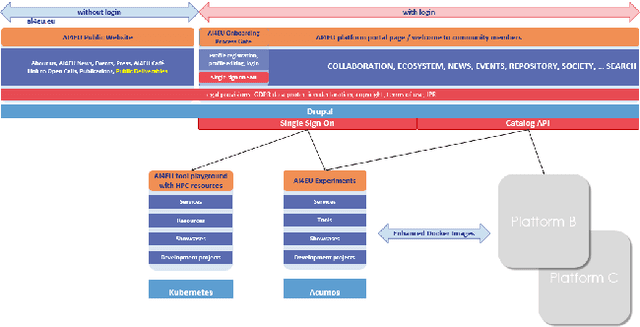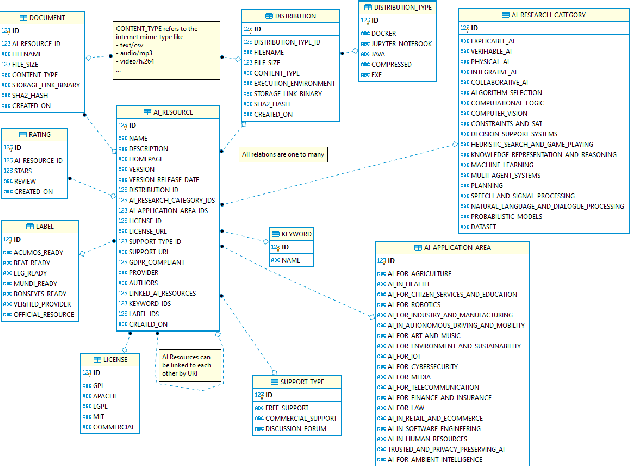Julián Moreno-Schneider
Towards Discourse Parsing-inspired Semantic Storytelling
Apr 25, 2020



Abstract:Previous work of ours on Semantic Storytelling uses text analytics procedures including Named Entity Recognition and Event Detection. In this paper, we outline our longer-term vision on Semantic Storytelling and describe the current conceptual and technical approach. In the project that drives our research we develop AI-based technologies that are verified by partners from industry. One long-term goal is the development of an approach for Semantic Storytelling that has broad coverage and that is, furthermore, robust. We provide first results on experiments that involve discourse parsing, applied to a concrete use case, "Explore the Neighbourhood!", which is based on a semi-automatically collected data set with documents about noteworthy people in one of Berlin's districts. Though automatically obtaining annotations for coherence relations from plain text is a non-trivial challenge, our preliminary results are promising. We envision our approach to be combined with additional features (NER, coreference resolution, knowledge graphs
Towards an Interoperable Ecosystem of AI and LT Platforms: A Roadmap for the Implementation of Different Levels of Interoperability
Apr 17, 2020



Abstract:With regard to the wider area of AI/LT platform interoperability, we concentrate on two core aspects: (1) cross-platform search and discovery of resources and services; (2) composition of cross-platform service workflows. We devise five different levels (of increasing complexity) of platform interoperability that we suggest to implement in a wider federation of AI/LT platforms. We illustrate the approach using the five emerging AI/LT platforms AI4EU, ELG, Lynx, QURATOR and SPEAKER.
A Workflow Manager for Complex NLP and Content Curation Pipelines
Apr 16, 2020

Abstract:We present a workflow manager for the flexible creation and customisation of NLP processing pipelines. The workflow manager addresses challenges in interoperability across various different NLP tasks and hardware-based resource usage. Based on the four key principles of generality, flexibility, scalability and efficiency, we present the first version of the workflow manager by providing details on its custom definition language, explaining the communication components and the general system architecture and setup. We currently implement the system, which is grounded and motivated by real-world industry use cases in several innovation and transfer projects.
Abstractive Text Summarization based on Language Model Conditioning and Locality Modeling
Mar 29, 2020



Abstract:We explore to what extent knowledge about the pre-trained language model that is used is beneficial for the task of abstractive summarization. To this end, we experiment with conditioning the encoder and decoder of a Transformer-based neural model on the BERT language model. In addition, we propose a new method of BERT-windowing, which allows chunk-wise processing of texts longer than the BERT window size. We also explore how locality modelling, i.e., the explicit restriction of calculations to the local context, can affect the summarization ability of the Transformer. This is done by introducing 2-dimensional convolutional self-attention into the first layers of the encoder. The results of our models are compared to a baseline and the state-of-the-art models on the CNN/Daily Mail dataset. We additionally train our model on the SwissText dataset to demonstrate usability on German. Both models outperform the baseline in ROUGE scores on two datasets and show its superiority in a manual qualitative analysis.
A Dataset of German Legal Documents for Named Entity Recognition
Mar 29, 2020



Abstract:We describe a dataset developed for Named Entity Recognition in German federal court decisions. It consists of approx. 67,000 sentences with over 2 million tokens. The resource contains 54,000 manually annotated entities, mapped to 19 fine-grained semantic classes: person, judge, lawyer, country, city, street, landscape, organization, company, institution, court, brand, law, ordinance, European legal norm, regulation, contract, court decision, and legal literature. The legal documents were, furthermore, automatically annotated with more than 35,000 TimeML-based time expressions. The dataset, which is available under a CC-BY 4.0 license in the CoNNL-2002 format, was developed for training an NER service for German legal documents in the EU project Lynx.
Orchestrating NLP Services for the Legal Domain
Mar 28, 2020



Abstract:Legal technology is currently receiving a lot of attention from various angles. In this contribution we describe the main technical components of a system that is currently under development in the European innovation project Lynx, which includes partners from industry and research. The key contribution of this paper is a workflow manager that enables the flexible orchestration of workflows based on a portfolio of Natural Language Processing and Content Curation services as well as a Multilingual Legal Knowledge Graph that contains semantic information and meaningful references to legal documents. We also describe different use cases with which we experiment and develop prototypical solutions.
 Add to Chrome
Add to Chrome Add to Firefox
Add to Firefox Add to Edge
Add to Edge